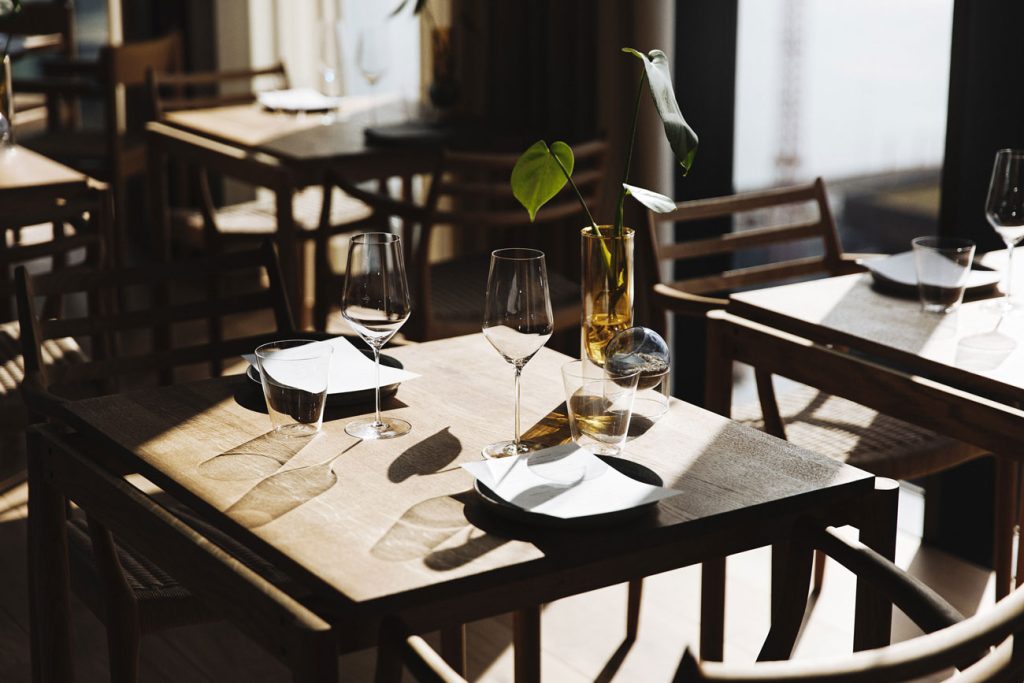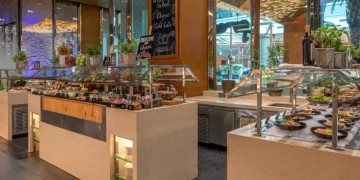Introduction: The Intersection of Art and Food in the World of Haute Cuisine
Haute cuisine, a term that transcends the simple act of eating, is a celebration of culinary excellence, artistry, and precision. It’s where food becomes an intricate, multi-sensory experience, a canvas on which chefs craft masterpieces using the finest ingredients. More than just a meal, dining at a world-class restaurant is a journey that explores culture, history, technique, and innovation. For those who have the privilege of stepping into the world’s most exclusive restaurants, haute cuisine offers an immersion into a realm where flavor, presentation, and atmosphere merge into something far greater than the sum of its parts.
In the fine dining world, every dish tells a story—whether it’s the use of rare and seasonal ingredients, the meticulous techniques involved in preparation, or the intricate pairing of flavors that challenge and delight the palate. These elements of haute cuisine not only satisfy hunger but elevate dining into a sophisticated ritual. This world is reserved for those who appreciate food as an art form, for those who seek not just nourishment but an experience that transcends the ordinary.
In this article, we will explore what defines haute cuisine, look inside the kitchens of Michelin-starred restaurants, understand the prestige of culinary accolades, and discover the finer points of dining etiquette at elite establishments. Finally, we will discuss what the future holds for haute cuisine in a rapidly evolving culinary landscape.
Defining Haute Cuisine: What Makes a Restaurant Qualify as Haute Cuisine?
Haute cuisine, often translated as “high cuisine,” is a culinary approach that emphasizes sophisticated techniques, high-quality ingredients, and an artistic touch. It is typically associated with fine dining restaurants that offer a level of refinement and exclusivity beyond the usual dining experience. But what makes a restaurant truly haute cuisine?
1. Culinary Mastery and Technique
At the core of haute cuisine is the mastery of cooking techniques. Chefs in elite restaurants are not just skilled at cooking; they are experts in using advanced techniques to elevate each ingredient to its highest potential. Sous-vide cooking, molecular gastronomy, and precision pastry work are just a few examples of the technical expertise involved. It’s about refining every detail—from how a vegetable is cut to the temperature at which a sauce is reduced—ensuring that the dish is not just tasty but a work of art.
2. Premium Ingredients and Seasonal Produce
Haute cuisine relies heavily on the finest ingredients, often sourced from exclusive regions or producers. From rare truffles and caviar to delicate herbs and exotic fruits, these ingredients are selected for their quality, freshness, and the ability to enhance the overall dish. The focus on seasonality also means that menus change throughout the year, reflecting the availability of the best produce at any given time. It’s not just about using expensive ingredients, but about using them in a way that brings out their natural flavors and textures.
3. Artistic Presentation
In haute cuisine, presentation is as important as taste. The aesthetics of a dish can often be as intricate as the flavor profile. Chefs will carefully design each plate to create a visual experience that matches the taste. Colors, shapes, textures, and arrangements are thoughtfully composed to evoke a sense of beauty and sophistication. It’s an art form that demands creativity and attention to detail, where each plate is presented as an edible work of art.
4. Exclusivity and Atmosphere
Dining in a haute cuisine restaurant is an experience that transcends food. These establishments are known for their impeccable service, elegant interiors, and intimate ambiance. The exclusivity of haute cuisine establishments also contributes to their prestige. Whether it’s a hidden gem in a Parisian alley or a Michelin-starred haven nestled in the Swiss Alps, these restaurants offer a sense of occasion and luxury that makes dining there feel truly special.

Michelin Stars and Beyond: Understanding the World’s Most Coveted Culinary Accolades
Michelin stars are perhaps the most recognized symbol of excellence in the culinary world, but there are other prestigious accolades that also play a significant role in identifying the finest dining establishments. Understanding how restaurants earn these coveted honors helps reveal the rigorous standards behind haute cuisine.
1. Michelin Stars
Michelin stars are awarded by anonymous inspectors from the Michelin Guide, and the system is famously stringent. Restaurants can receive one, two, or three stars, with each level representing a higher degree of excellence:
- One Star: A “very good” restaurant in its category, offering a high standard of cooking and quality ingredients.
- Two Stars: Excellent cuisine that is worth a detour, characterized by exceptional technique and presentation.
- Three Stars: The pinnacle of culinary achievement, representing “exceptional cuisine” that is worth a special trip. Three-star restaurants are usually regarded as the best in the world, with a near-perfect dining experience that combines technique, service, and atmosphere.
2. Other Prestigious Accolades
While Michelin stars are the most well-known, other prestigious awards help define the elite restaurant scene. For example, the World’s 50 Best Restaurants list, compiled by a panel of over 1,000 chefs, restaurateurs, and critics, recognizes the top culinary destinations across the globe. Restaurants on this list are often highly influential in the culinary world and offer a combination of cutting-edge creativity and exceptional quality.
In addition, Relais & Châteaux and Gault & Millau also offer prestigious recognitions for the finest dining establishments, focusing on luxury, creativity, and sustainability. These awards, along with Michelin stars, ensure that only the best of the best are recognized in the world of haute cuisine.
A Peek Inside Elite Kitchens: The Chefs and Kitchens Behind Michelin Stars and Gourmet Delicacies
The chefs who run Michelin-starred kitchens are some of the most talented and creative minds in the culinary world. These chefs are not only experts in traditional cooking techniques but also innovators who push the boundaries of what food can be. Their kitchens are where the magic happens, and inside these elite culinary spaces, every dish is crafted with precision and passion.
1. Renowned Chefs
Some of the most famous chefs in the world are behind the kitchens of Michelin-starred restaurants. Chefs like Alain Ducasse, René Redzepi, Joan Roca, and Massimo Bottura have become legends in the culinary world, their names synonymous with the highest levels of culinary artistry. These chefs are known for their creativity, their ability to redefine cuisine, and their relentless pursuit of perfection.
Their work involves not only preparing food but also conceptualizing dishes that challenge the boundaries of taste, presentation, and technique. Whether it’s creating an entirely new cooking method or reinterpreting traditional dishes with a modern twist, these chefs continually set new standards for haute cuisine.
2. Behind the Scenes
A Michelin-star kitchen is an orchestra, with each chef playing a distinct role to ensure a flawless dining experience. The kitchen is typically divided into sections: the saucier prepares sauces, the poissonnier handles fish, the pâtissier is in charge of desserts, and the garde manger looks after cold dishes. Each team member is highly specialized and skilled, ensuring that each component of the meal meets the highest standards.
The pace in such kitchens is intense, and the pressure is high, but the reward is the satisfaction of creating dishes that will delight and surprise diners. It’s a world where precision, passion, and perfectionism are key.
Dining Etiquette at Luxury Restaurants: What to Expect When You’re a Guest of Exclusivity
Dining at a Michelin-starred or haute cuisine restaurant involves more than just ordering food; it’s about embracing an experience steeped in tradition and etiquette. Understanding the proper conduct at these elite establishments ensures that guests fully appreciate the luxury of the occasion.
1. Dress Code
Many haute cuisine restaurants require guests to dress formally or semi-formally. While exact requirements vary from one establishment to another, it is always important to dress appropriately to reflect the sophisticated nature of the dining experience. Expect to see a well-dressed clientele in fine attire—men often in jackets and ties, women in elegant dresses or formal wear.
2. Service Expectations
In haute cuisine restaurants, service is an art in itself. From the moment guests arrive, they are treated with impeccable attention. Servers are often well-versed in the dishes being served and will provide detailed explanations of each course, the ingredients used, and the inspiration behind the dish. The level of detail and knowledge displayed by the staff is part of what makes the experience so exclusive.
3. The Pace of Dining
Expect dining at a high-end restaurant to be a leisurely affair. Haute cuisine meals often consist of multiple courses, each served with care and precision. The meal is meant to be savored, with ample time between courses to appreciate the flavors and the artistry behind each dish. Guests are encouraged to take their time and enjoy the atmosphere.
4. Wine Pairings
A hallmark of fine dining is the carefully curated wine list, often paired with each course to enhance the flavors of the dish. Sommeliers, who specialize in wine pairings, will guide you through the selection process, ensuring that each glass complements the meal. Wine pairing is considered an essential element of the haute cuisine experience.
Conclusion: The Future of Haute Cuisine and Dining Experiences for the Discerning Foodie
As we look to the future, haute cuisine will continue to evolve, influenced by new technologies, sustainability initiatives, and a growing interest in plant-based and health-conscious dining. However, the essence of haute cuisine—precision, creativity, and a commitment to excellence—will remain unchanged.
The world of fine dining is set to become even more immersive, with restaurants offering unique dining experiences, from interactive kitchens to culinary storytelling. As diners increasingly seek out one-of-a-kind experiences
, the intersection of art, food, and culture will shape the future of haute cuisine.
For those with a passion for extraordinary food and unforgettable dining experiences, the world’s most exclusive restaurants will remain the ultimate destination. Dining at these elite establishments is not just about food; it’s about savoring an experience that engages all the senses, creating memories that last a lifetime.
















































